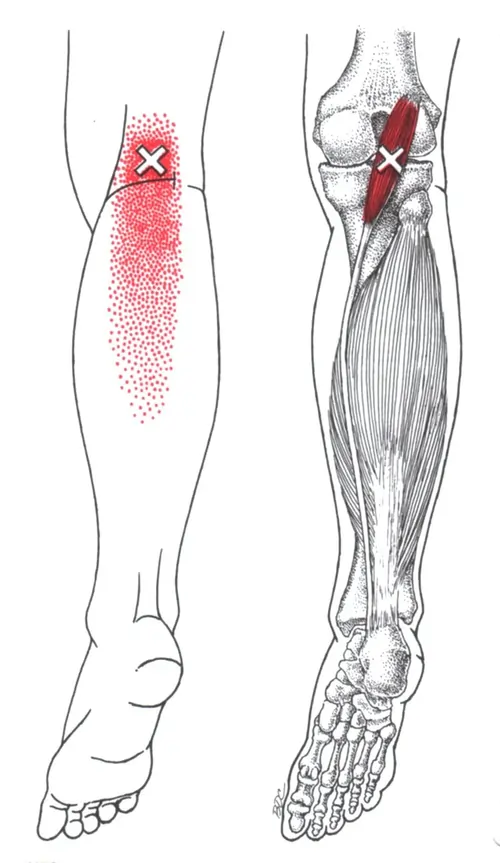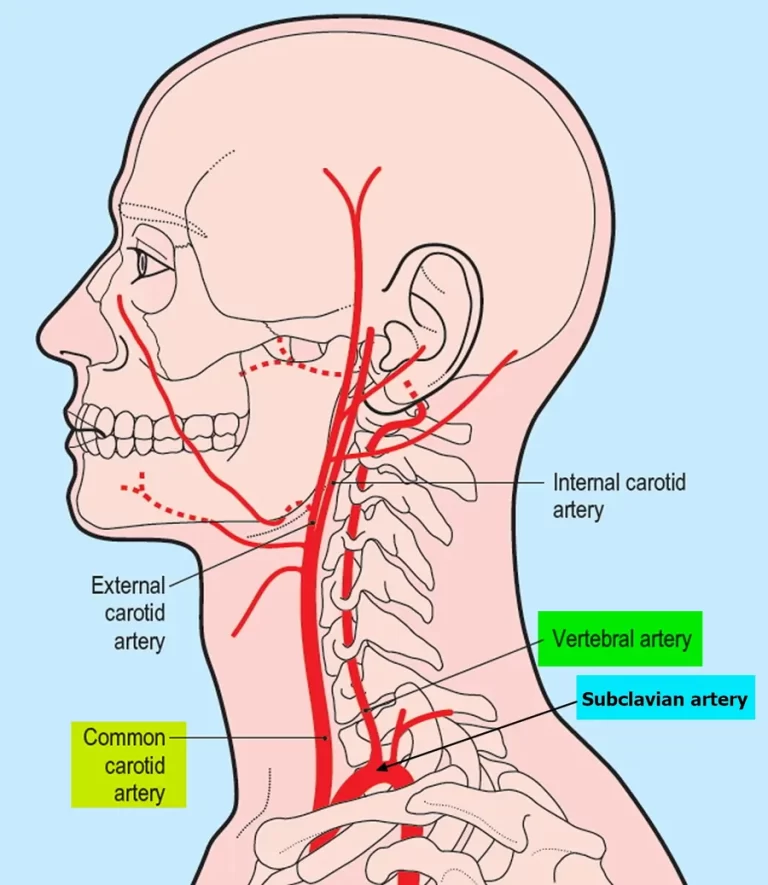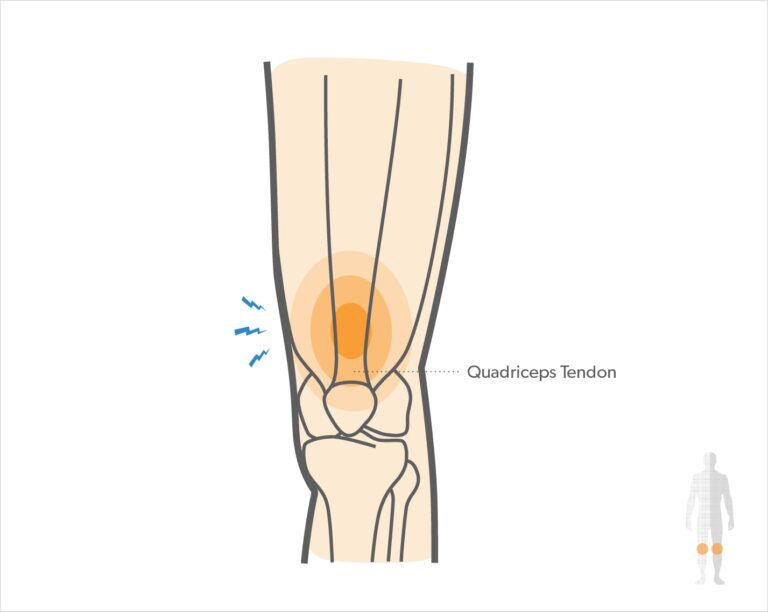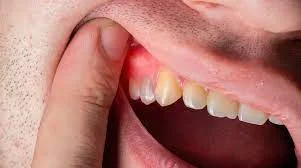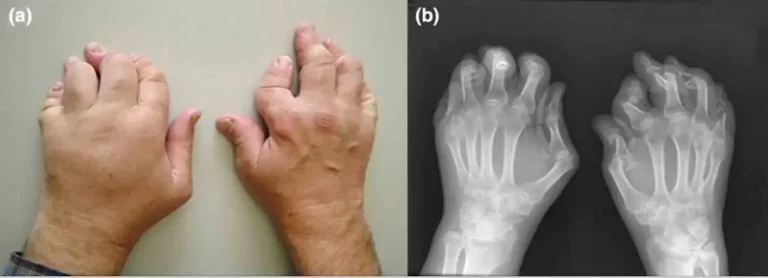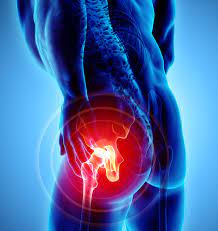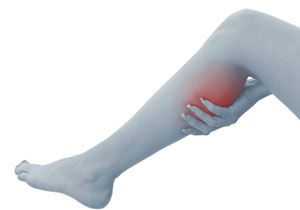Plantaris Muscle Pain: Cause, Symptoms, Treatment, Exercise
When you feel Sudden pain in the back of the calf & observe swelling & bunching of the calf muscle it is indicated to be plantaris muscle pain. this pain occurs due to many reasons like tear & strain in the muscle. this muscle pain also presents with swelling & spasms. This pain is relieved by to RICE principle, pain medication & physiotherapy treatment.

Table of Contents
What is the anatomy of the plantaris muscle?
- Plantaris muscle is the long or thin muscle that extends behind the knee joint & into the sural region – calf of the posterior leg.
- This muscle is formed together with the gastrocnemius & soleus, these muscles are the superficial group of the posterior compartment of the leg.
- Muscle Origin = Lateral supracondylar line of femur bone & oblique popliteal ligament of the knee joint.
- Muscle Insertion = Posterior surface of the calcaneus bone via a calcaneal tendon.
- The function of muscle :
- Talocrural joint = foot plantar flexion
- Knee joint = knee flexion
What are the causes of the plantaris muscle pain?
- The common injury that occurs in this muscle is known as the tennis leg.
- This pain is also produced due to the rupture of the plantaris muscle.
- This Injury occurs due to some activities like jumping, running & pushing off one leg; in sports like tennis, basketball, & soccer, which require fast foot movement in a certain direction.
- Plantaris muscle strains occur rarely.
- Generally, this muscle strain occurs in conjunction with the other injury & other muscles in the back of the lower leg.
- This muscle pain is also due to the soreness of the muscle after a workout & overuse of a muscle.
What are the Symptoms of the plantaris muscle injury?
- You feel Sudden pain in the back of the calf.
- You are observing swelling & bunching of the calf muscle.
- Sometimes you observe Swelling with bruising in the back of the leg.
- You also feel Cramping & spasm sensations in the calf muscle.
- In the muscle pain area present to trigger or tender points.
- You are often hearing to popping sound on the back of the leg.
What is the Diagnosis of the plantaris muscle pain?
- The diagnosis is most important for conforming to whether the injury occurs in the plantaris muscle or not because sometimes the injury occurs in the large part which leads to serious injury of Achilles tendon tear.
- To confirm the diagnosis doctor is advised to have an MRI & ultrasound.
- Both tests are useful to confirm the diagnosis.
What is the treatment for the plantaris muscle pain?
RICE principle :
When the pain occurs in the muscle doctor is advised to RICE principle as home treatment or primary treatment.
- R – rest = When the pain occurs doctor always advises to rest for sometimes to release muscle pain & swelling, you can use crutches for weight-bearing & release muscle pain.
- I – ice = You can apply ice on the area of pain for 20 minutes release to swellings & muscle pain but always apply the ice with the help of a towel between the skin & ice to prevent ice burn, you can also use it to ice pack & frozen peas for ice therapy.
- C – compression = You can also apply compression bandage release to muscle pain, and swelling.
- E – elevation = You must be elevated to the injured leg for release to muscle pain & swelling.
Pain medication :
- Release muscle pain, you can also take an anti-inflammatory drug like ibuprofen for NAISD drug.
- You can also apply volini gel to the area of pain.
What is Physiotherapy treatment for plantaris muscle pain?
Physiotherapy treatment helps you relieve pain, swelling, spasms & tightness of the muscle pain.
The physiotherapy treatment includes massage, electrotherapy treatment, stretching, and exercise.
Massage :
- When the trigger or tender points are present in the muscle pain therapist is advised to massage therapy release to the muscle pain.
- It is applied with the help of the oil & applied for 5 minutes.
- It is applied 3 times per day.
Electrotherapy treatment :
To relieve the swellings, spasms & pain therapist is advised to electrotherapy treatment.
In electrotherapy, the treatment therapist is used to many machines.
- When the trigger & tender points are present therapists apply US = ultrasound therapy for the release of muscle pain.
- This treatment is applied with the help of gel & applied for 5 to 10 minutes on the area of pain.
- This therapy helps you release pain & swelling.
- Reduce to pain therapist is applied to SWD = short wave diathermy, IFT = Interferential Therapy, TENS = Transcutaneous Electrical Nerve Stimulation on the area of pain.
- SWD = Short wave diathermy is hot therapy for release to spams on the area of pain.
- IFT = Interferential Therapy & TENS = Transcutaneous Electrical Nerve Stimulation is applied with the help of gel & electrodes on the area of pain.
- This therapy is applied for 10 minutes to the area of pain.
Stretching :
Stretching helps you release the muscle tightness & pain of the muscle.
- Towel stretch
- Standing calf stretch
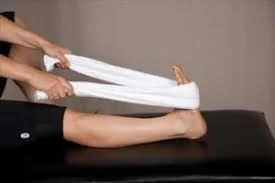
Towel stretch:
- The patient is Sitting on a firm surface with one leg stretched ahead of you.
- Then do the Loop towel circling the toes & the foot.
- Pull the towel toward the body to keep the knee joint straight.
- Hold this position for 30 seconds & relax.
- Do this stretching 3 times in 1 session & 3 sessions per day.
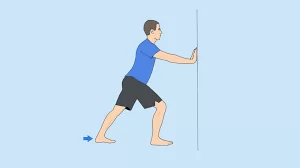
Standing calf stretch:
- The patient is in a standing position for stretching.
- Must be Keep both feet flat on the floor & back knee joint stretch.
- Hold this position for 30 seconds & relax.
- Do this exercise 10 times in 1 session & 3 sessions per day.
Exercise :
Exercise helps you release muscle pain & weakness.
- Double-Leg Calf Raise
- Single-Leg Calf Raise
- Seated Calf Raise
- Seated heel raise
- Single balance leg
- Resistance Band Calf Exercise
- Wall jump
Double-Leg Calf Raise:
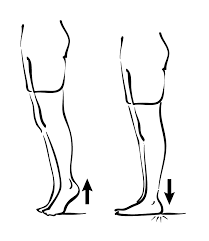
- The patient is Standing near a wall & bench for balance.
- Place the feet hip-width apart & ankles, knees & hips in vertical alignment to protect the joints.
- Then Push down into the balls of both feet to raise the body.
- Must be Keep the abdominal muscles pulled in so that move straight rising & shifting the body from side to side.
- Do this exercise 10 times in 1 session & 3 sessions per day.
Single-Leg Calf Raise:
- In the starting position, the patient stands on one leg near a wall & bench for balance with the other leg bent.
- The ankle, knee & hip joints of the leg are in vertical alignment to protect the joints.
- Then push down into the ball & raise the foot and the body upward.
- The abdominal muscles are pulled in so avoid shifting backward & forward.
- Do this exercise 10 times in 1 session & 3 sessions per day.
Seated Calf Raise:
- The patient is in a sitting position in the chair, with the feet hip-width apart.
- Bring the feet back, so that heels are behind the knee joint.
- From the position, lift the heels off the floor & come up onto the toes.
- Hold for 10 times & gently lower the heels back down.
- Do this exercise 10 times in 1 session & 3 sessions per day.

Seated heel raise:
- The patient is in a sitting position in a chair with both feet on the floor.
- Then Push down through the toes & raise the heel off the floor.
- Hold this position for 10 seconds, then lower.
- Do this exercise 10 times in 1 session & 3 sessions per day.

Single balance leg:
- The patient is in a standing position with no support.
- Then arrange to balance on one leg.
- Hold this position for 30 seconds & relax.
- Do this exercise 10 times in 1 session & 3 sessions per day.
Resistance Band Calf Exercise:
- The patient is in a sitting or standing position.
- Then Wrap the band around the end of the foot & press down into the band.
- Then extend the toe & engage the calf muscle.
- Hold this position for three seconds, then slowly relax to the starting position.
- Do this exercise 10 times in 1 session & 3 sessions per day.
Wall jump:
- The patient is to face a wall & place a piece of masking tape on a pair of feet higher than the head.
- After that jump up together with the arms higher than the head & take a look at the touch of the piece of tape.
- Must check you are doing -a “spring” variety of motion & don’t land hard on the feet.
- Then improve to taking off & landing on a single foot.
- Do this exercise 10 times in 1 session & 3 sessions per day.

